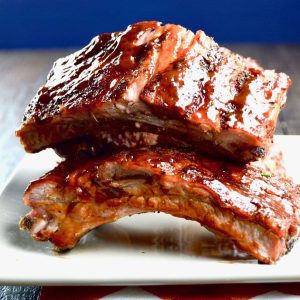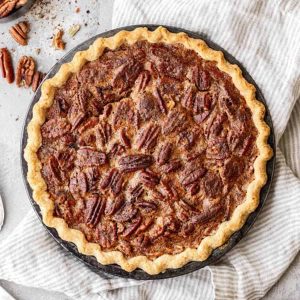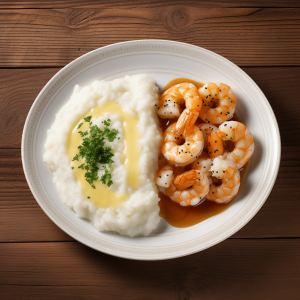
Preserving the Past: Southern Food Traditions Worth Saving
The American South, a land steeped in history and culture, boasts a culinary heritage as rich and complex as its past. More than just sustenance, Southern food is a narrative – a story told through flavors, techniques, and ingredients passed down through generations. But in an era of fast food and culinary globalization, some of these invaluable traditions are fading. It’s crucial that we recognize and actively preserve these culinary treasures, ensuring their survival for future generations. This isn’t about nostalgia; it’s about safeguarding a vital part of our cultural identity.
The Slow Fade: Why Southern Food Traditions are at Risk
Several factors contribute to the erosion of traditional Southern foodways.
-
Urbanization and Changing Lifestyles: As more Southerners move to cities and adopt busier lifestyles, the time and resources required for traditional cooking become scarce. Convenient, processed foods often replace slow-cooked meals and homegrown ingredients.
-
Loss of Agricultural Knowledge: The decline of family farms and the increasing reliance on industrialized agriculture means fewer people possess the knowledge of heirloom crops, traditional farming methods, and foraging techniques that are essential to authentic Southern cuisine.
-
Commodification and Misrepresentation: “Southern food” has become a marketing buzzword, often used to describe dishes that bear little resemblance to the real thing. This trivialization dilutes the authenticity of the tradition.
-
Generational Gap: Young people may not be exposed to, or interested in, learning the traditional techniques and recipes from their elders, leading to a break in the culinary lineage.
Culinary Diamonds: Southern Food Traditions We Must Protect
Here are some specific Southern food traditions that deserve our attention and preservation efforts:
1. Heirloom Crops: Seeds of the South
Southern agriculture was once characterized by a diverse array of heirloom crops, each with its unique flavor profile and story. These crops, often adapted to specific regional climates and conditions, are now endangered by the dominance of standardized, commercially-viable varieties.
Examples of Heirloom Crops:
| Crop | Unique Characteristic | Why It’s Important |
|---|---|---|
| Sea Island Peas | Creamy texture, slightly sweet flavor | Represents Gullah Geechee culinary heritage |
| Bradford Watermelon | Exceptionally sweet, thin rind | Historical significance; rare and nearly extinct |
| Jimmy Red Corn | Deep red kernels, rich flavor | Used in whiskey and cornbread, cultural significance |
Preservation Efforts: Supporting local farmers who grow heirloom varieties, saving seeds, and educating others about the importance of biodiversity.
2. Preserving the Harvest: A Symphony of Flavors
Before refrigeration, Southerners relied on a variety of preserving techniques to extend the shelf life of seasonal bounty. These techniques, from canning and pickling to smoking and drying, are more than just methods of food storage; they are intricate culinary arts.
Traditional Preservation Techniques:
| Technique | Description | Common Southern Applications |
|---|---|---|
| Canning | Preserving food in sealed jars through heat processing | Jams, jellies, pickles, fruits, vegetables |
| Pickling | Preserving food in a brine or vinegar solution | Pickled okra, cucumbers, watermelon rind |
| Smoking | Preserving food by exposing it to smoke | Smoked ham, bacon, sausages |
| Drying | Removing moisture from food to inhibit spoilage | Dried apples, beans, herbs |
Preservation Efforts: Learning traditional preserving techniques from experienced cooks, attending workshops, and sharing knowledge with others.
3. The Art of the Biscuit: More Than Just Flour and Water
The Southern biscuit is an iconic symbol of Southern hospitality and culinary ingenuity. Mastering the art of the biscuit requires a delicate touch, an understanding of ingredients, and a connection to tradition. It’s a skill that’s slowly being replaced by pre-made mixes and store-bought versions.
Key Elements of a Great Southern Biscuit:
- Fat: The right type and amount of fat (lard, shortening, or butter) are crucial for creating flaky layers.
- Technique: Gentle handling and minimal mixing are essential to prevent gluten development and ensure a tender crumb.
- Oven Temperature: A hot oven is needed to create lift and a golden-brown crust.
Preservation Efforts: Seeking out and learning from experienced biscuit makers, practicing the technique regularly, and sharing your biscuits with others.
4. Whole Hog Cookery: From Snout to Tail
Traditionally, Southern families would raise hogs and utilize every part of the animal, minimizing waste and maximizing flavor. This “whole hog” approach required skill, knowledge, and a deep respect for the animal.
Elements of Whole Hog Cookery:
- Curing: Preserving pork through salting, smoking, and aging.
- Sausage Making: Grinding and seasoning pork to create a variety of sausages.
- Rendering Lard: Extracting fat from pork for cooking and baking.
- Using Offal: Utilizing organs and other less common cuts in dishes like chitterlings and head cheese.
Preservation Efforts: Supporting local farmers who raise heritage breed hogs, learning butchering techniques, and experimenting with traditional pork recipes.
5. The Gathering of the Gullah Geechee: Sustenance and Soul
The Gullah Geechee people, descendants of enslaved Africans who lived in the coastal regions of the Carolinas, Georgia, and Florida, have a unique culinary heritage that blends African traditions with Southern ingredients. This cuisine is characterized by its use of rice, seafood, okra, and other locally sourced ingredients.
Distinctive Gullah Geechee Dishes:
| Dish | Description | Key Ingredients |
|---|---|---|
| Hoppin’ John | Rice and black-eyed peas, often with smoked pork | Rice, black-eyed peas, smoked ham hock |
| She Crab Soup | Creamy soup with crab meat and roe | Crab meat, crab roe, sherry, cream |
| Okra Soup | Soup with okra, tomatoes, and seafood or meat | Okra, tomatoes, shrimp or chicken, rice |
Preservation Efforts: Supporting Gullah Geechee chefs and restaurants, learning about Gullah Geechee culture and history, and respecting the authenticity of their cuisine.
Keeping the Flame Alive: How to Preserve Southern Food Traditions
Preserving Southern food traditions is a collective effort. Here are some ways individuals and communities can contribute:
-
Support Local Farmers and Markets: Purchase ingredients from local farmers who grow heirloom crops and practice sustainable agriculture.
-
Learn from Elders: Seek out and learn from experienced cooks in your community. Ask them to share their recipes and techniques.
-
Document Recipes and Stories: Record family recipes and the stories behind them. Create a cookbook or oral history project.
-
Attend Cooking Classes and Workshops: Learn traditional cooking and preserving techniques from experts.
-
Share Your Knowledge: Teach others about Southern food traditions and encourage them to participate in preservation efforts.
-
Support Organizations Dedicated to Food Preservation: Donate to or volunteer with organizations that work to preserve heirloom crops, traditional farming methods, and culinary heritage.
-
Promote Authentic Southern Cuisine: Support restaurants and chefs who are committed to using traditional ingredients and techniques.
Preserving Southern food traditions is not just about saving recipes; it’s about safeguarding a cultural identity, honoring the past, and ensuring that future generations can experience the flavors and stories of the South. By actively participating in preservation efforts, we can keep the flame of Southern culinary heritage burning bright.

Additional Information
Preserving the Past: A Deeper Dive into Southern Food Traditions Worth Saving
The article “Preserving the Past: Southern Food Traditions Worth Saving” likely touches on the importance of maintaining culinary heritage in the American South, highlighting the unique ingredients, techniques, and cultural narratives embedded within its foodways. To expand upon this, we need to understand why these traditions are vulnerable and how we can effectively contribute to their preservation.
The Vulnerabilities of Southern Food Traditions:
Several forces threaten the continuity of Southern culinary heritage:
- Globalization and Culinary Homogenization: The proliferation of chain restaurants and readily available processed foods contribute to a decline in local ingredients and traditional cooking methods. Younger generations, exposed to a broader global culinary landscape, may not fully appreciate or engage with the foodways of their ancestors.
- Industrialization of Agriculture: Mass production of crops and livestock prioritizes efficiency over traditional varieties. Heirloom seeds, once central to regional culinary identities (like the Sea Island Red Pea or the Bradford Watermelon), are often less profitable for large-scale agriculture and risk extinction. This, in turn, affects the flavor profiles and textures that define Southern cuisine.
- Socioeconomic Shifts: Economic hardship and migration patterns have impacted the intergenerational transmission of culinary knowledge. Recipes and techniques passed down through families are lost as younger generations move away from rural areas and engage in different professions. The rise of convenience foods also poses a threat as busy schedules leave less time for preparing traditional dishes from scratch.
- Erosion of Cultural Context: Southern food is intrinsically linked to its cultural context, encompassing farming practices, storytelling, community gatherings, and social rituals. As these traditions fade, so does the appreciation for the historical and social significance of the food. The cultural appropriation of Southern cuisine without understanding its roots can also contribute to a superficial understanding and ultimately, a loss of authenticity.
- Climate Change: The effects of climate change are already impacting agriculture in the South, with shifting weather patterns and increased risk of extreme events. This threatens the availability of key regional ingredients and requires adaptation in farming practices, potentially altering traditional methods.
Strategies for Effective Preservation:
Preserving Southern food traditions requires a multifaceted approach that addresses the vulnerabilities mentioned above:
- Seed Saving and Heirloom Preservation: Supporting organizations dedicated to preserving heirloom seeds and livestock breeds is crucial. For example, the Seed Savers Exchange actively collects, grows, and distributes heirloom seeds, ensuring the survival of unique varieties. Similarly, organizations like the American Livestock Breeds Conservancy work to conserve endangered breeds of livestock that are vital to traditional Southern agriculture. Case studies of farmers who have successfully integrated heirloom crops into their businesses can provide valuable insights for others.
- Documenting and Archiving Culinary Knowledge: Capturing the recipes, techniques, and stories of elder cooks is paramount. Oral history projects, cookbooks featuring traditional recipes with contextual information, and online archives can provide a lasting record of Southern foodways. The Southern Foodways Alliance (SFA) is a prime example of an organization dedicated to documenting and celebrating Southern food culture through oral histories, films, and publications.
- Promoting Sustainable and Ethical Farming Practices: Supporting local farmers markets and CSAs (Community Supported Agriculture) fosters direct connections between consumers and producers, encouraging the cultivation of regional specialties and promoting sustainable farming practices. Initiatives like the Appalachian Sustainable Agriculture Project (ASAP) provide resources and support to farmers in the Appalachian region, promoting local food systems.
- Culinary Education and Apprenticeships: Offering culinary education programs that focus on Southern cuisine and providing apprenticeships with experienced cooks can ensure the transmission of traditional skills to the next generation. Programs that combine culinary training with historical and cultural context are particularly effective.
- Community Engagement and Storytelling: Creating opportunities for communities to share their food stories and celebrate their culinary heritage is essential. Food festivals, potlucks, and community gardens can foster a sense of collective identity and encourage the preservation of food traditions. The act of preparing and sharing food becomes a tangible way to connect with the past and reinforce cultural values.
- Promoting Culinary Tourism: Highlighting unique Southern food experiences through culinary tourism can generate economic opportunities for local communities and increase awareness of regional specialties. This should be done responsibly, ensuring that cultural traditions are respected and that benefits are shared equitably.
Quantitative Data and Examples:
- Statistics on Heirloom Varieties: A study by the United Nations Food and Agriculture Organization (FAO) estimates that approximately 75% of plant genetic diversity has been lost since the 1900s. This highlights the urgent need for seed saving and heirloom preservation efforts.
- Case Study: Anson Mills: Anson Mills is a prime example of a company dedicated to reviving heirloom grains and ingredients in the South. They work directly with farmers to cultivate forgotten varieties like Carolina Gold rice and provide high-quality ingredients to chefs and home cooks, contributing significantly to the revival of Southern cuisine.
- Impact of Culinary Tourism: Studies have shown that culinary tourism can have a significant economic impact on local communities. For example, regions with strong culinary identities often experience increased tourism revenue, job creation, and business development.
Conclusion:
Preserving Southern food traditions requires a concerted effort to address the vulnerabilities threatening their survival. By supporting sustainable agriculture, documenting culinary knowledge, promoting culinary education, and fostering community engagement, we can ensure that the rich and diverse culinary heritage of the American South continues to thrive for generations to come. It’s not just about preserving recipes; it’s about preserving a cultural identity, a connection to the land, and a shared history that is as rich and flavorful as the food itself. The key lies in actively engaging with these traditions, understanding their significance, and working to ensure their continued relevance in a rapidly changing world.






